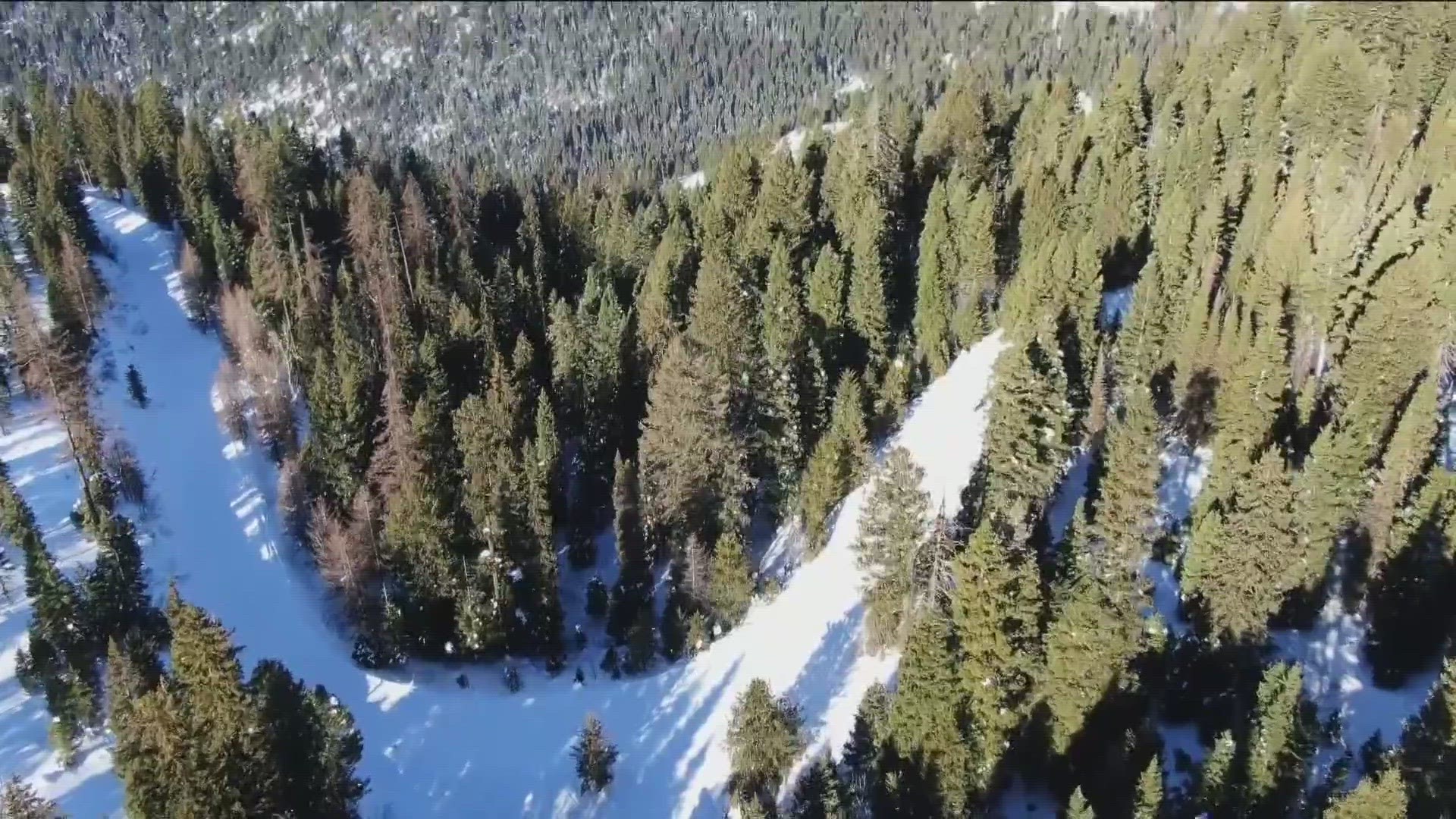IDAHO, USA — Idaho's snowpack is going to dwindle even more this week. Warmer temperatures are on the way, for some spots near-record highs are expected on Sunday. The cooler temperatures we've been seeing this March and April have really limited the amount of melting so far.
Erin Whorton is the Water Supply Specialist for the National Resources Conservation Service. She works on tracking the snowpack. Whorton said in order for melting to pick up steam, temperatures in the mountains need to stay above freezing at night, which they haven't lately. That may be about to change.
"We're really on the cusp, and I think we're really on the cusp across almost the entire state. So, I think with the warm temperatures this next week, we're gonna see a big change and see that snowpack melting start to happen, " he said.
Water managers are working to make room in the reservoirs in anticipation of this late snowmelt.
"So maybe a good analogy is taking your frozen lasagna out of your freezer and putting it into the oven. It's going to take a lot longer to warm up than taking it out of your fridge. And the snowpack is like that frozen lasagna, where it's just really cold. You need that prolonged heat, you need your overnight temperatures to stay above freezing in order to get the snowpack to warm up all the way," he said.
Whorton said April is typically a transitional month here in Idaho, where we start to see the snowmelt happen. This year, it's been delayed because of the below average temperatures.
"So, going forward, it's a given the melt is going to be happening soon. We might get cold periods where it slows down," he said. "But, once that train leaves the station, you're not stopping it."
Whorton added the NRCS anticipates losing some of the runoff to the soil. The ground is still dry from the drought conditions over the past few years.
"We still don't know how that's going to impact snowmelt runoff. We'd know there's a lot of water in the mountains and the snowpack, but a lot of the soils are going to soak that up before we really see it entering the river," he said. "So, depending on how quickly it melts, the soil dryness is going to play a factor in how much runoff we actually see this year."
Download the KTVB mobile app to get breaking news, weather and important stories at your fingertips.
Watch more weather:
See the latest weather forecasts and news in our YouTube playlist:

